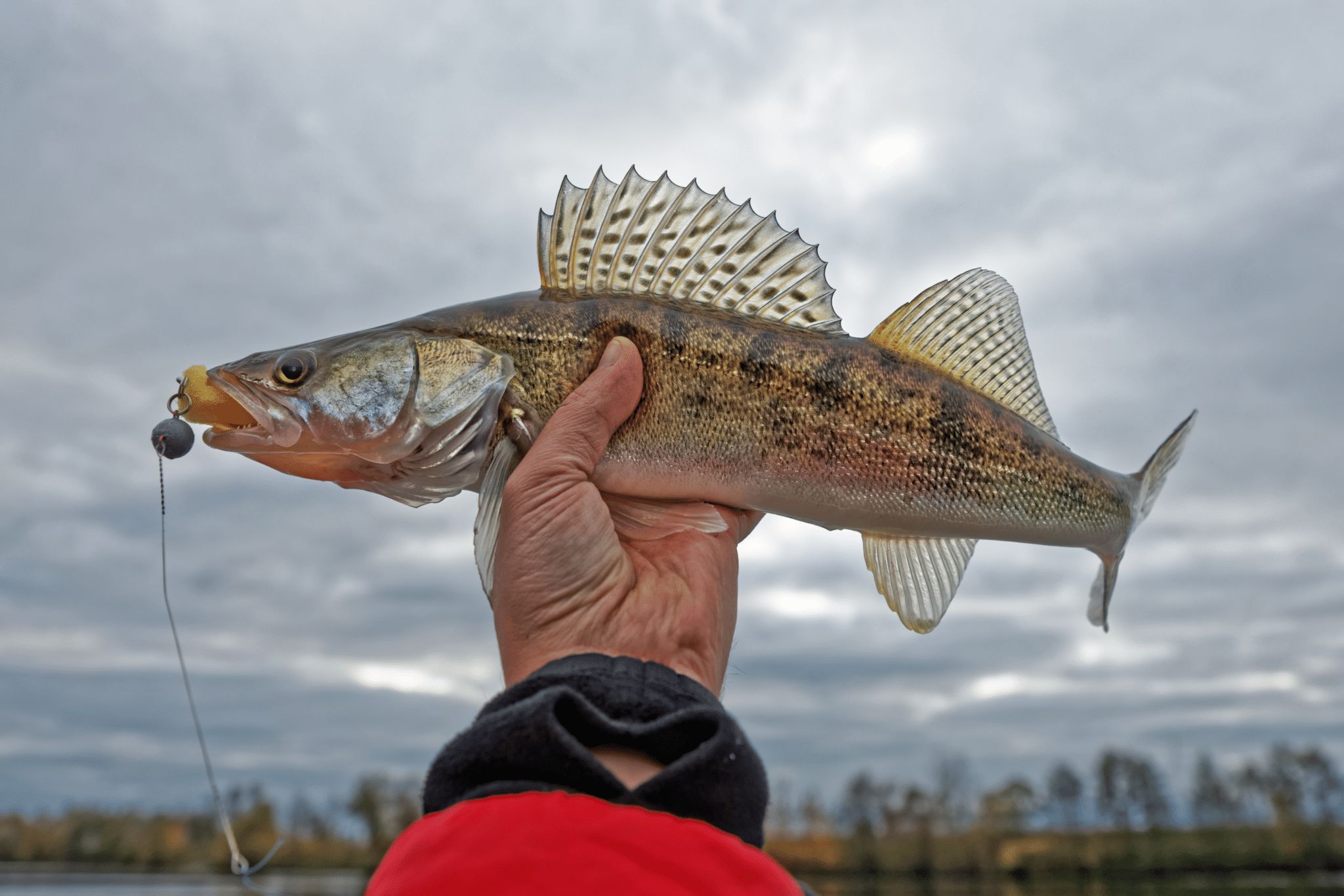Fall Walleye in Iowa

Fall Walleye in Iowa
Fall is a great time to hunt for that trophy walleye you’ve been chasing all season. As the weather continues to cool, walleye will go on the chew as they put on weight for the upcoming winter. They’re not shy about hitting big baits, specifically large minnows. When water temps hit 60 deg, it’s time to start looking for pods of bigger fish.
Walleye know their environment, where the best buffet lines are, and when to hit them. You can use your electronics and lake maps to determine these most likely areas. You also need to know when to look shallow and when to look deep.
Feeding Time
When the water temperatures dip below 50 degrees…it’s go time! You should find these fish shallow on cloudy days with a good chop on the water. Turbid water will create oxygen and push bait fish up. Flats, sandbars, and wind-blown points adjacent to deep water are prime feeding areas in these conditions.
On calm, clear days, your best bet is to look for flats and sandbars with deeper water adjacent to them. If the flat is broken up with some rock piles here and there, that’s even better. Walleye will stack up along the drop-offs and wait for bait fish and other prey to come to them. A creek channel is also an excellent place to look for active fish, especially with a distinctive bend in the channel. The bend creates a perfect ambush point for hungry walleye.
CHANGE THE PACE
By now, walleye have been pounded by all kinds of presentations and seen their fair share of crank baits and live bait presentations go by. We’ve rigged these baits up in tried and true fashion and trolled them at what anglers call “walleye speed”. Back trolling at times will slow the speed of our presentation even further.
But slower is not always better. If we change our presentation a bit, we might have a better chance of getting that reaction bite from larger walleye. Shallow-running crankbaits trolled at 2 1/2 to 3 1/2 mph about 100-150 feet behind the boat may entice walleye to react. This is a great technique for running shallow flats that have weeds, scattered clumps of cabbage, or rock piles.
Another approach would be to do the “bait and switch.” In depths of 8 to 12 feet, use a deep-diving Shad Rap with a bait-tipped floater tied 3 to 4 feet behind the rear split ring of the crankbait. If they don’t hit the Shad Rap as it passes by, they may be more interested in the real thing that’s coming along directly behind the crank. One note about trolling crank baits at faster speeds: You need to “tune” your baits to make sure they are running true. Lower the bait and give it a quick swim alongside the boat. If it swims off to one side or the other, you’ll need to adjust the front eye where your line is tied until your bait runs perfectly straight at higher speeds.
JIG TROLLING
Throughout my fishing career, I have used 1/4-3/8 oz jigs tipped with a white plastic 3-inch grub and have trolled them behind my boat with remarkable success for just about every species of fish that will readily take one. Walleye also chase and hit the bait. It requires slowing down a bit. That’s not to say they won’t hit it if I’m trolling at 2-MPH or so, because they sure will!
As the late season wears on and the water temps hit 50 degrees and are cooling off, troll a jig tipped with a larger 4-inch minnow shad. Time to slow down and use your trolling motor so the jig will get down to where the fish are. There is nothing quite like that telltale initial thump of a walleye taking your bait before you reel up and set the hook.
BAIT CHOICES
The crucial choices are those that match the lake forage, at least the most predominant one. Remember that walleye have an abundance to choose from by the time fall rolls around, so don’t be afraid to experiment with your baits.
Crankbaits are excellent at locating fish. Once you’ve located active fish and can’t get them to consistently hit crankbaits, switch to a vertical presentation with a jig or jig/minnow combination. Bottom bouncers rigged with crawler harnesses are good choices as well. Perch-colored blades and beads give off the illusion of a bait fish swimming; the crawler simply acts as the tail or the meat of the meal that the walleye is getting ready to hit.
Lindy Spinners and Crawler Harnesses have done a great job of creating rigs that imitate forage fish in many area lakes. Another variation is the Slow Death Rig. You can use a small floating bead in line with your leader to help keep the bait off the bottom since some lakes have a lot of moss built up.
by Ben Leal
August 2024

